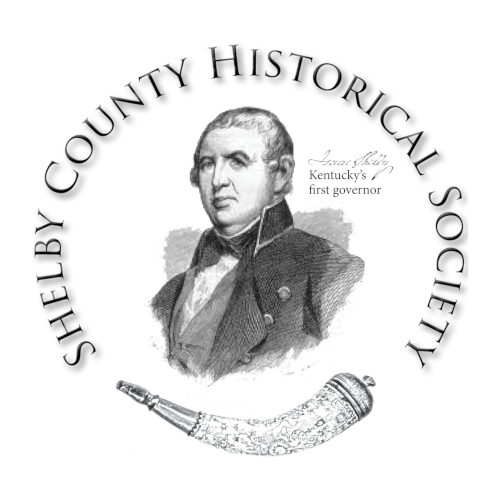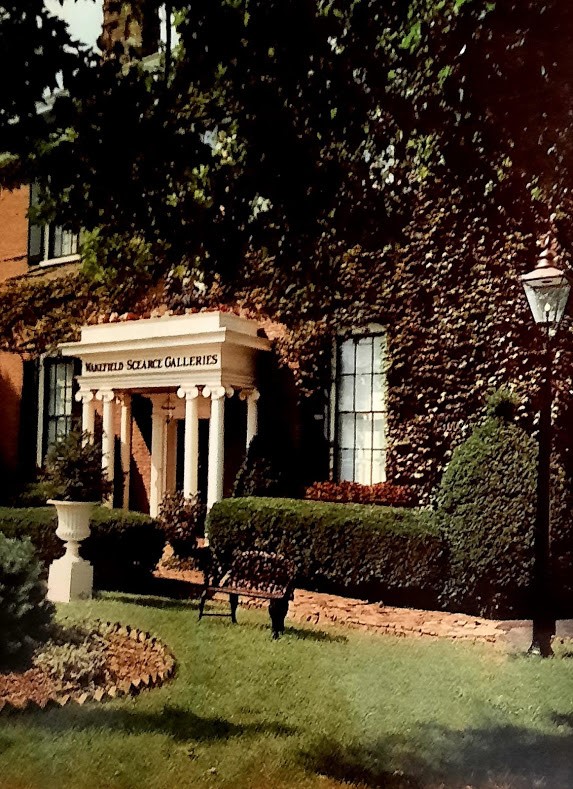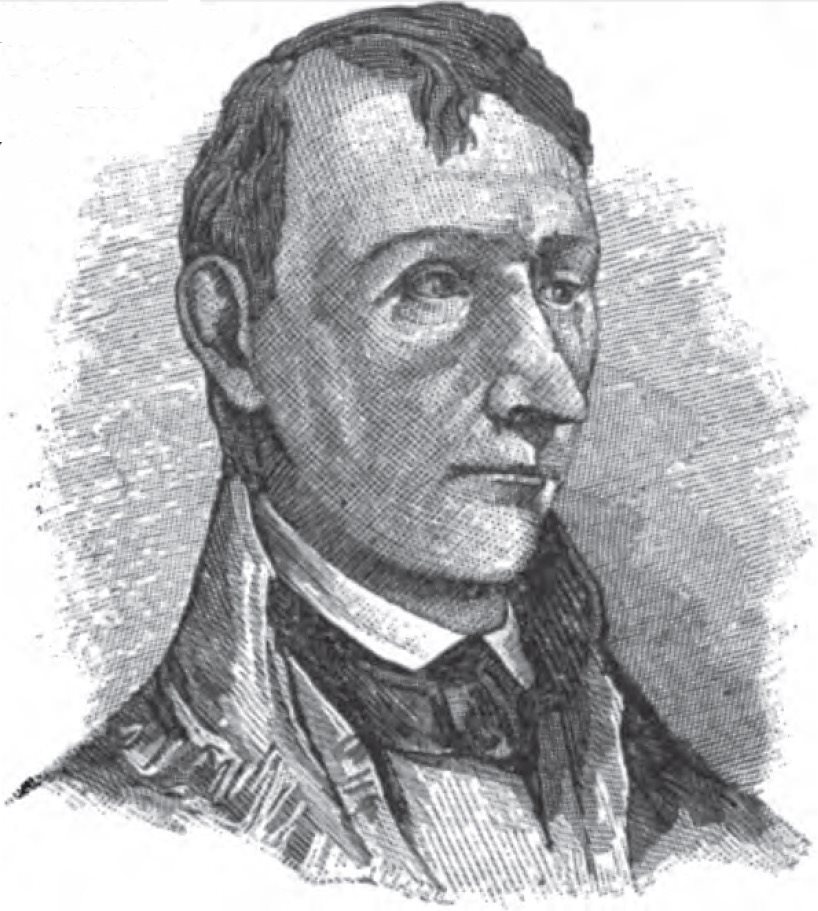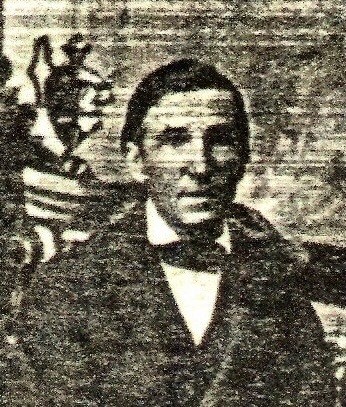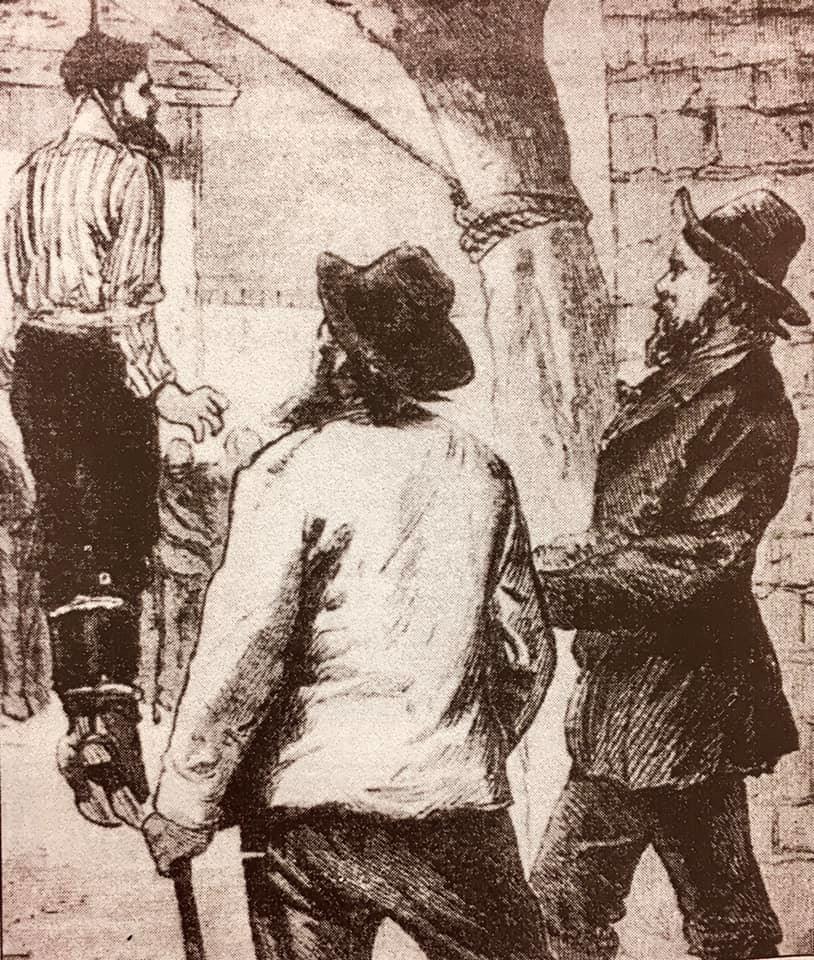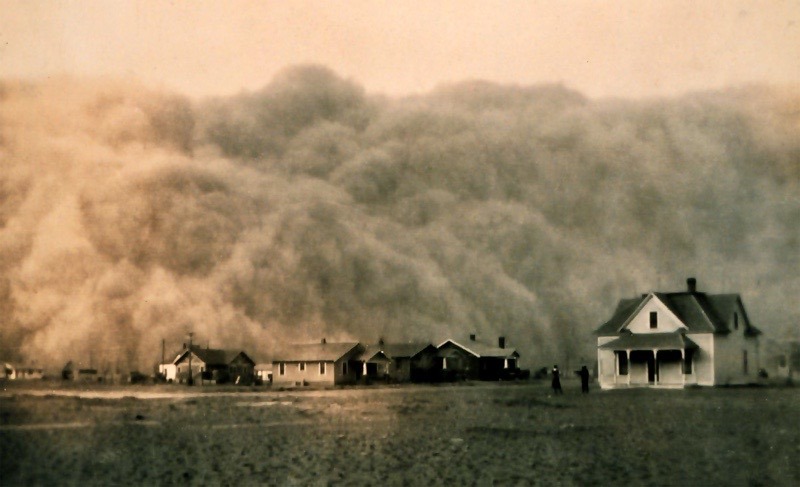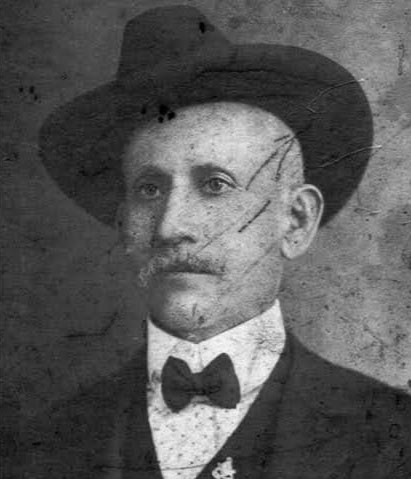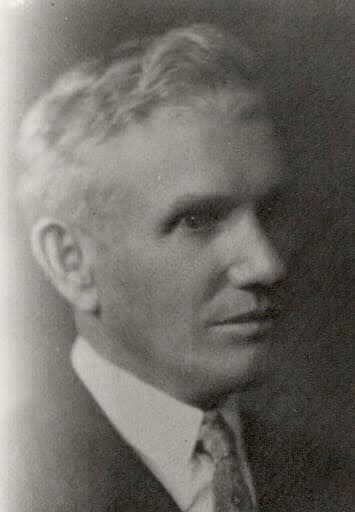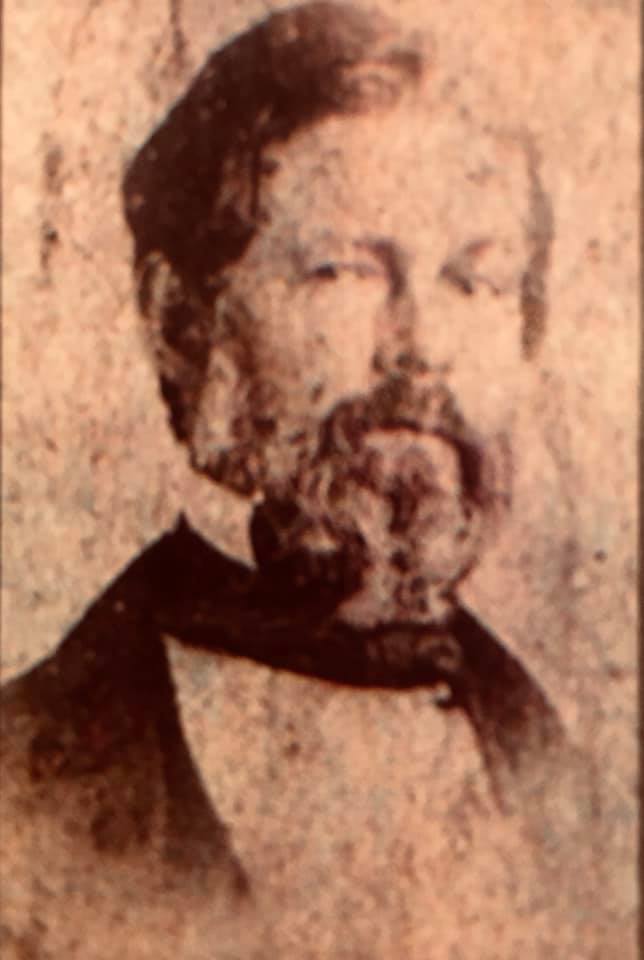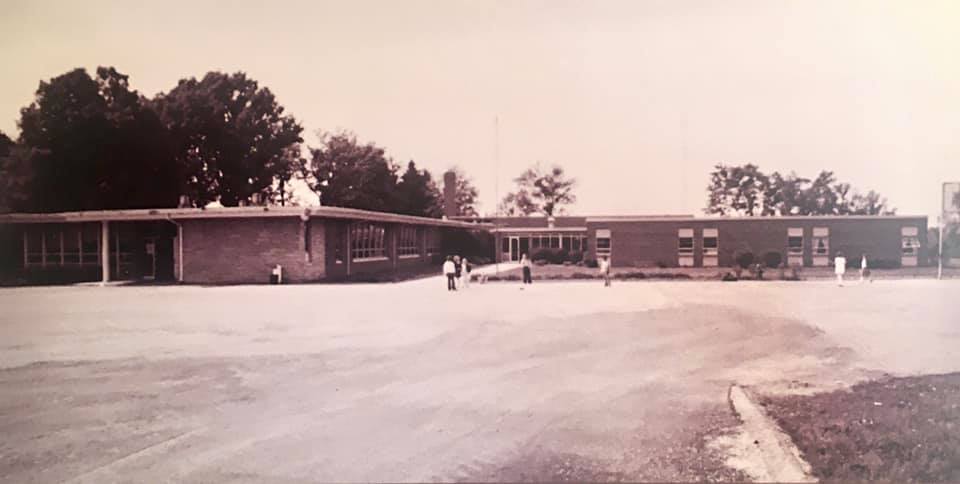Explore Shelby County’s Rich History
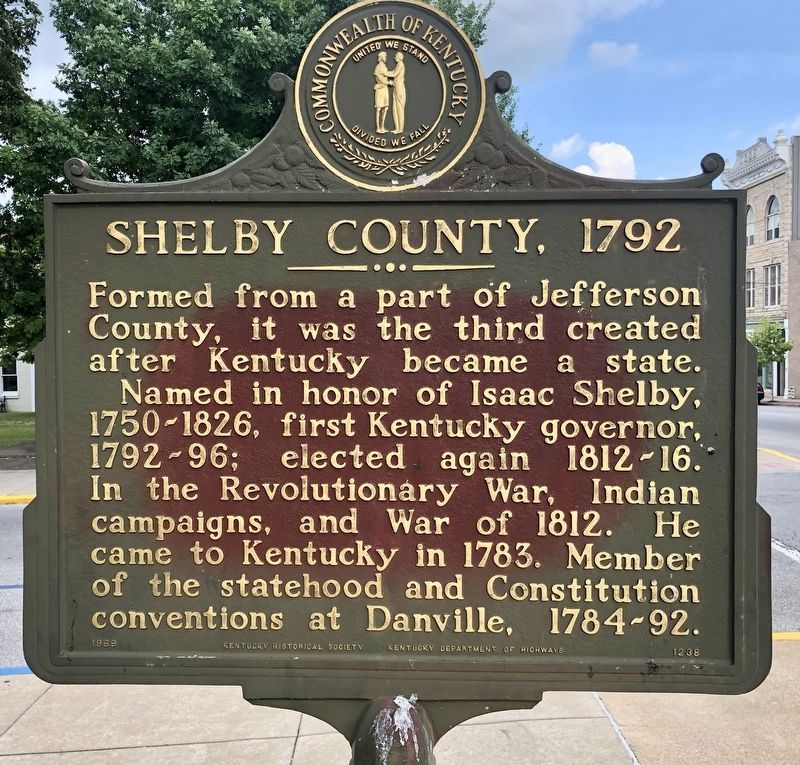
Creating a County, 1792
Shelby County, Kentucky’s twelfth county, was created from Jefferson County on June 28,1792. It was the third county created after Kentucky became a state. Shelbyville was designated as the county seat. Named in honor of Kentucky’s first governor, Isaac Shelby (1750-1826), Shelby County covers 383 square miles. So fast growing was it, that by 1800 its population exceeded 8,100 individuals.
Prior to the Civil War, agriculture and livestock were the foundation of Shelby County’s economy. In 1850 the first railroad line passed through the county connecting Frankfort with Louisville. Railroads created improved access to regional and national markets for local farmers. With greater prosperity, commercial and residential development followed. Corn was the most important cash crop in the period of 1870 to 1900, followed by hemp, tobacco and wheat. In 1870 Shelby County was the top hog producer in the state and was fifth highest for beef cattle. Shelby County as a rich heritage rooted in the soil.
Kentucky Historical Marker #1238 tells its history and is placed on the Old Courthouse lawn at 5th & Main Streets in Shelbyville.
At the beginning of the twentieth century, economic growth slowed following a national trend. After World War II, however, economic growth was spurred by greater tobacco production and the establishment of an industrial base. The Shelby County Industrial and Development Foundation was formed in 1957 and continues to bring in industry and foster growth. Always a major stopping point between Lexington and Louisville, in 1961 Shelbyville was linked to Louisville by Interstate 64, making travel easier and quicker.
Today, Shelby County is home to many industrial and manufacturing facilities, including several distilleries. In 2005, Shelby County was proclaimed the Saddlebred Horse Capital of the World, because it is home to many of the country’s best breeding and training facilities for American Saddlebred horses. Known internationally for this title, Shelby County was also home for a time to Colonel Harland Sanders of Kentucky Fried Chicken fame. Martha Layne Collins, Kentucky’s first female governor from 1983-1987, was born in the community of Bagdad. Shelby County continues to evolve and sticks by its motto: “Good Land, Good Living, Good People”.
Key Figures in Shelby County and Kentucky History
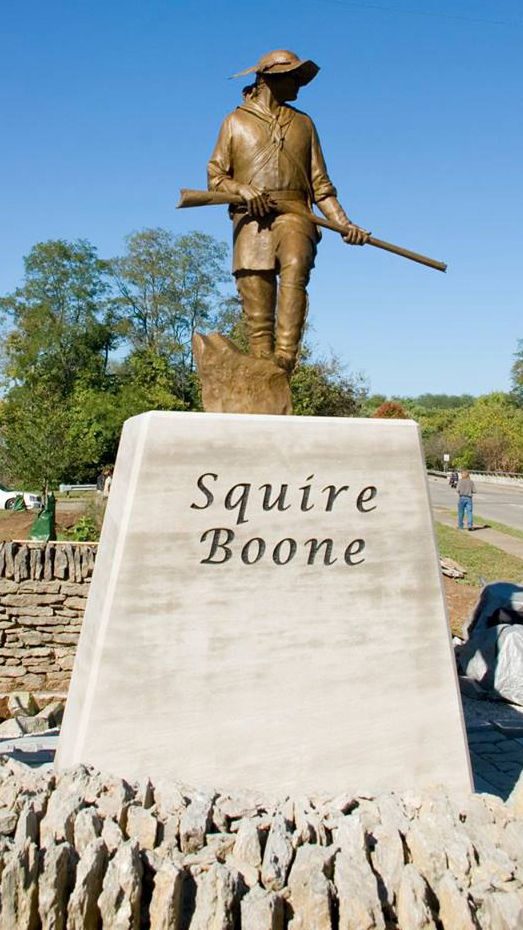
Squire Maugridge Boone, Jr.
Squire Maugridge Boone, Jr. (October 5, 1744 – August 5, 1815) left his mark on Shelby County and Kentucky history. He is best remembered for establishing a station along the banks of Clear Creek in a very pivotal era of Shelby County’s rich history. Settling Painted Stone Station in 1779/1780, Squire was one of the founding fathers of the county along with many other brave souls who ventured into the western lands of what became Kentucky. He played a pivotal role in the formation of the 12th county of Kentucky.
In honor of his accomplishments, a statue was created by sculptor Raymond Graf. A committee was formed to oversee the project, several members being members of the Shelby County Historical Society. Its unveiling and dedication on October 14, 2017 drew over 100 descendants to Shelby County for a reunion and tribute to Daniel Boone’s younger brother. A crowd gathered at Centenary United Methodist Church, whose heritage also has Painted Stone ties. The Boone Society held its National Reunion and Conference on June 20-24, 2018 in Lexington with a special event in Shelbyville on June 21 to celebrate the placement of the statue. Members placed a wreath at the statue on East Main Street to mark the significance of Squire Boone’s efforts to establish Shelby County, as well as Kentucky.
With many members world-wide, The Boone Society Inc. is an association of descendants, genealogists, and historians who enjoy studying the lives and times of this remarkable family. It was formed as a reference service for researchers, a conduit for genealogists, clearing-house for bibliographical works, and to host the biennial Boone Family Reunion.
Learn More
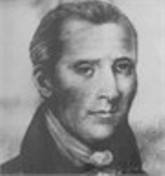
Who Was Squire Boone?
Squire was the son of Sarah Jarman Morgan and Squire Boone, Sr. – Squire being a name, not a title. He was born in Exeter Township, Berks County, PA, while Squire, Sr. was a native of Devon, England. In 1749, the family left Pennsylvania and settled in the Yadkin Valley area of Rowan County, North Carolina. In 1759, aged 15, he returned to Pennsylvania to apprentice as a gunsmith under his cousin Samuel Boone. After five years of apprenticeship, he returned to North Carolina.
Squire married Jane Van Cleave on August 8, 1765 and they had five children. Squire was at Ft. Boonesboro in September 1778 during the Great Siege where he used his talents as an artisan and gunsmith to fashion two wooden cannons from black gum tree trunks banded by iron wagon wheels. Squire was a man of the times, very clever, and very driven. After the Siege, he and his family lived at the Falls of the Ohio, the area that would become Louisville, for a time.
He was a longhunter, soldier, city planner, politician, land locator, judge, politician, gunsmith, miller, and even a preacher. It is said he performed the first marriage ceremony in what would become Kentucky on August 7, 1776 at Fort Boonesboro. Wherever older brother Daniel went, Squire was not far behind. As Shelby County Historical Society member Ted Igleheart pointed out in “Squire Boone The Forgotten Man”, Squire “did not have a John Filson to record his exploits and make him a legend as did his older brother, Daniel.” But he survived those exploits just the same.
Squire first came to Shelby County in 1775-1776. He had made several trips into what would become the state of Kentucky, taking provisions and ammunition to Daniel. He accompanied Daniel on several longhunts between 1767 and 1771. In 1775, when Richard Henderson hired Daniel Boone to blaze the Wilderness Road through the Cumberland Gap and into central Kentucky, Squire was by his side. Squire accompanied his brother and 30 other men, assisting in the settlement of Boonesborough.
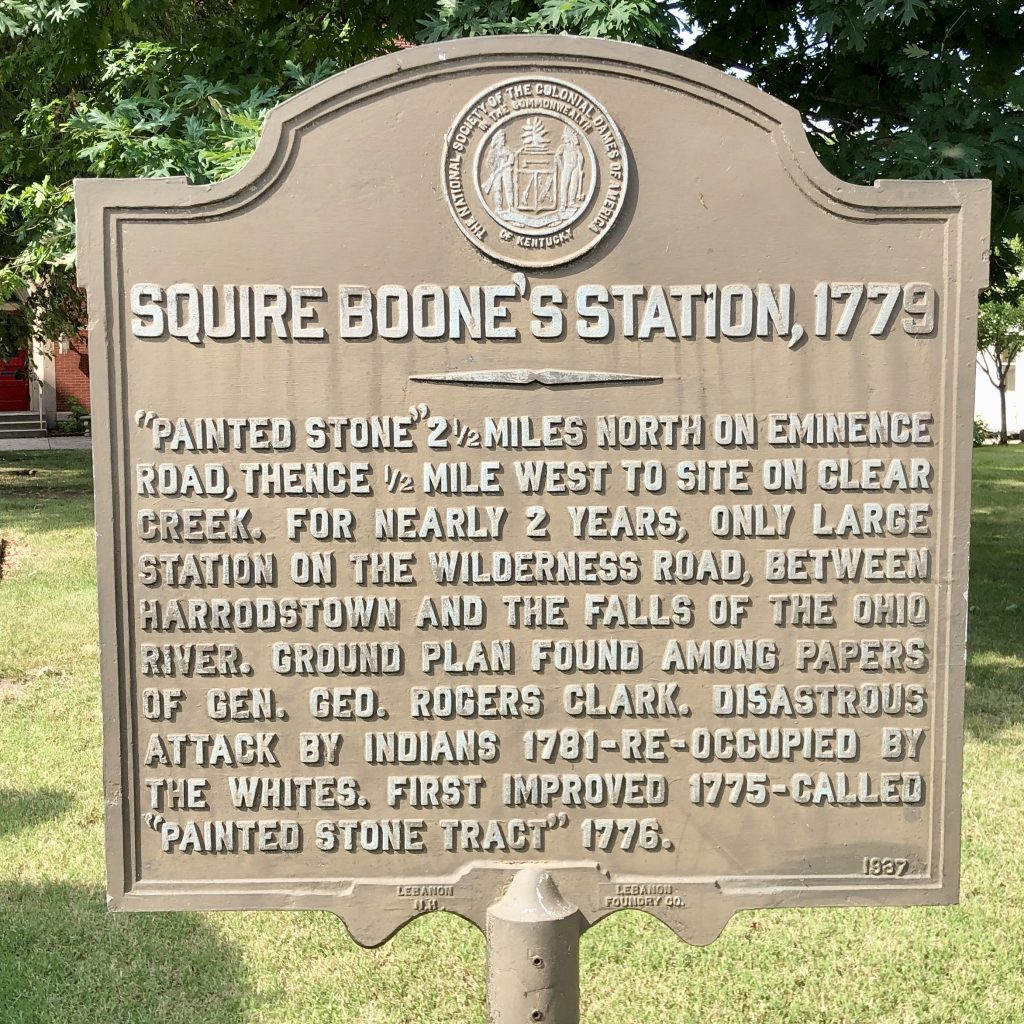
Painted Stone Station
Squire fought in many hand-to-hand combats during the American Revolution. He had settled his own Painted Stone Station during these turbulent years by the spring of 1780. He had previously visited the site and planted a corn crop, as was required for a pre-emption before settling a tract of land. He carved his name and date on a stone and painted the letters red. From this effort the location took on the name Painted Stone Station.
Squire had been wounded during the early April attack on the station and his right arm became an inch and a half shorter than his left arm as a result. Because Squire was still too weak from his injury to make the trip, he stayed behind at the station with one other family. Survivors of the Long Run Massacre documented their escape and every September in Shelbyville a re-enactment takes place, dedicated to their memory. Many Low Dutch settlers, who lived in nearby Henry County, were among them as well.
Squire was Captain over command of a unit of 23 Militia men at his fort. A year after establishing the fort with 13 families, it was attacked in April 1781 by marauding Native Americans. Known as the first permanent settlement in the county, it was still exposed and an easy target for Natives. After several encounters with the Natives, the settlers decided to abandon the station and relocate to nearby Linn’s Station in September of that year. The settlers were attacked halfway there, on September 13, 1781, in what became known as the Long Run Massacre.
Life After Shelby County
In 1782, Squire began acting as a land locator for wealthy land speculators who did not want to personally risk living on the frontier. However, like his famous brother, he lost property due to risky investments and land deals, including his Painted Stone Station. Squire served two terms in the Virginia legislature in 1789 and 1790 and was the primary sponsor of a bill to charter the town of Louisville. On May 1, 1780, the Virginia Legislature passed an act to establish Louisville.
After a foray into Mississippi and Missouri, he eventually settled with his family in Harrison County, Indiana, south of Corydon around 1804. The flourishing settlement became known as Boone Township. He acquired a large tract of land on the western edge of the township near a cave he and Daniel had hid in many years earlier to escape Native Americans. Considering the cave to be sacred, he decided that was where he wanted to be entombed.
On his land, Squire carved stone out of a nearby hill to build his home, also carving out various religious and political statements that are still there today. He also built Old Goshen Church, one of the first churches in the state.
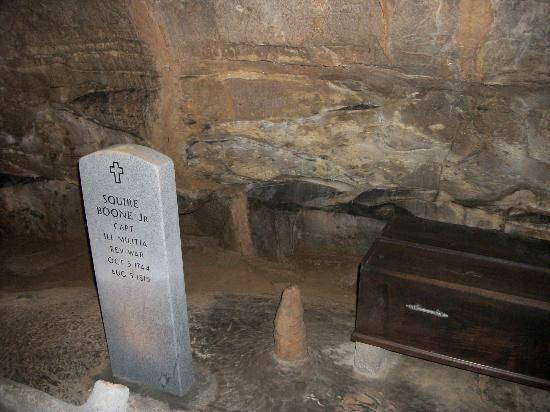
Squire Boone died of congestive heart failure, at age 70, and was buried as he requested in the cave on his property in Harrison County, Indiana. He had carved his own walnut coffin. The cave was sealed by his sons and his remains were left undisturbed for many years. The cave was eventually brought under local guardianship and became a commercial attraction known as Squire Boone Caverns. In 1973, his remains were removed from the cave and placed in a new coffin and reburied in a recessed part of the cave. Some say his son Enoch later removed his body and reburied his father on his farm (near Fort Knox, KY) next to Squire’s wife, Jane. While others remember his famous brother, Squire has not been overlooked by Shelby County, KY.
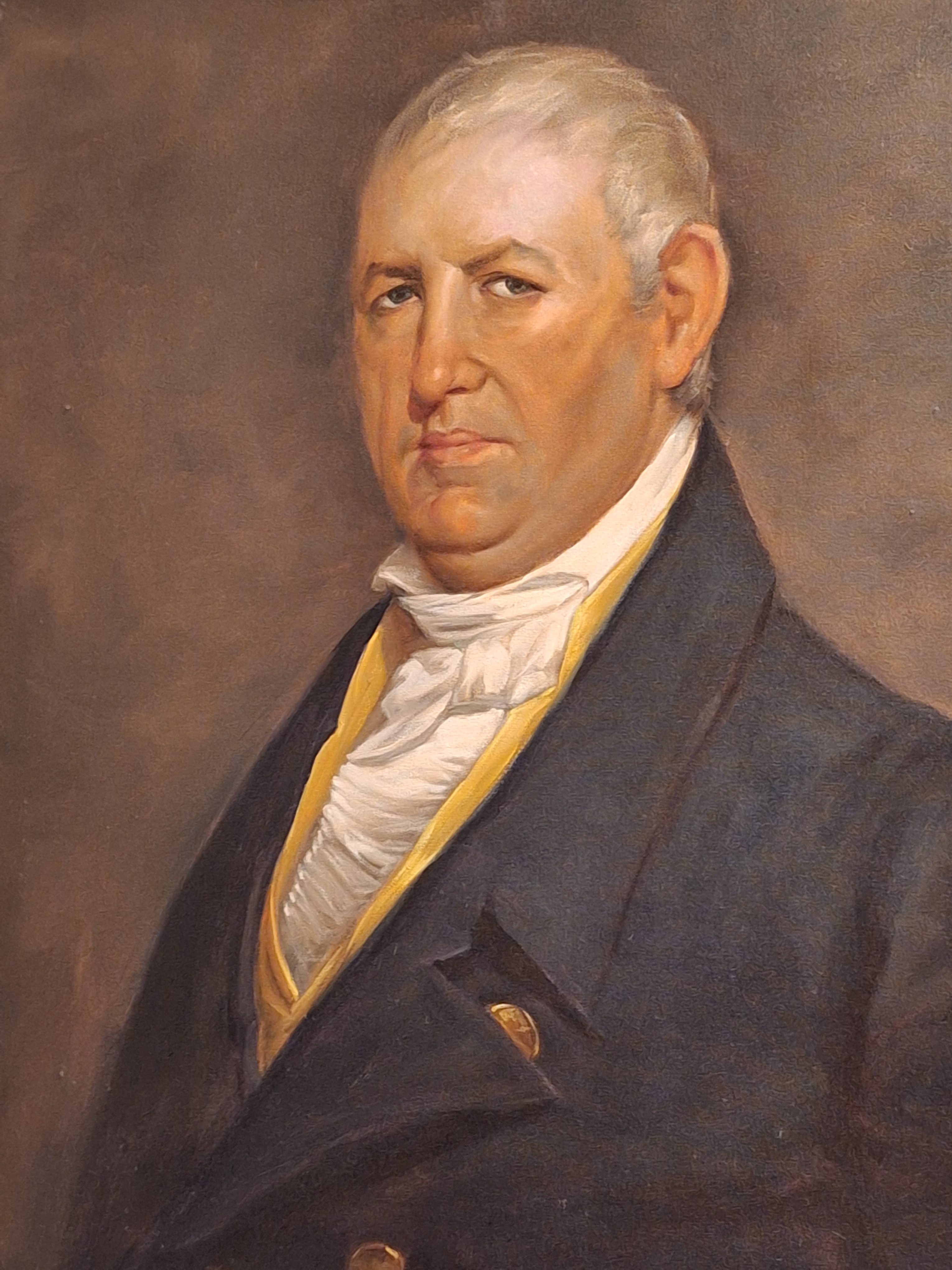
Isaac Shelby – Shelby County’s Namesake
Isaac Shelby was born on December 11, 1750 in Hagerstown, Maryland. He was the third child of Evan and Letitia (Cox) Shelby. Evan and his family immigrated from Tregaron, Wales, in 1735, eventually settling in western Virginia.
At age eighteen he was appointed deputy sheriff of Frederick County. Years later, after Pontiac’s War destroyed his father’s fur business, Shelby’s family moved to the vicinity of present-day Bristol, TN, where they built a fort and trading post.
Thinking he had completed military service for the growing nation that would become the United States of America in a short time, Shelby began working as a land surveyor. He soon realized his time as a civilian would be short lived.
He began his military career as a young man. Leading up to the Revolutionary War, Shelby was commissioned as a lieutenant in Virginia’s militia and served in a 1774 campaign against the Shawnee and Mingo Indians initiated by Virginia’s Royal Governor, John Murray, 4th Earl of Dunmore. In October 1774, Issac Shelby served as second-in-command to his father at the Battle of Point Pleasant.
Learn More
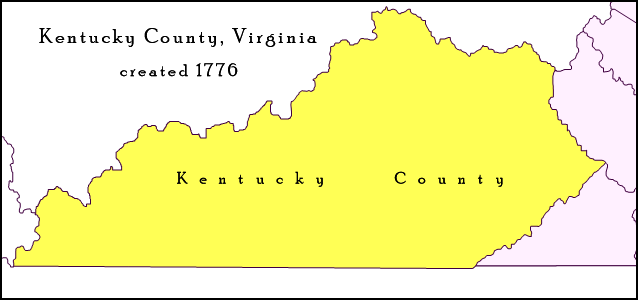
Esteemed Military Career
In 1776, Shelby was appointed a captain in the Virginian forces. His duty was to defend what would become the Kentucky County of Virginia in 1777 (formed from Fincastle County) against the British. What became known as the state of Kentucky was then known as the western theater. Several major battles of the Revolutionary War were fought on Kentucky soil, a land that had been inhabited by Native Americans for thousands of years. Shelby’s experience living and waging war on the frontier would prove useful to his military career.
Virginia governor Patrick Henry appointed Shelby to a position to secure provisions for the American forces on the frontier. From 1777 to 1779, Shelby led several similar expeditions to these western lands to procure supplies. In 1779, he helped guard a commission sent to extend the North Carolina-Virginia border to the west, having been appointed and commissioned a major by Governor Thomas Jefferson. As a result, this made North Carolina his temporary home.
North Carolina Governor Richard Caswell appointed him magistrate of newly formed Sullivan County and elevated him to the rank of colonel of the Sullivan County Regiment.
When the British captured Charleston, South Carolina in 1780, Shelby was surveying land in present-day Kentucky. This was an important year in Shelby County history as Squire Boone had established the first known permanent larger settlement, Painted Stone Station, between the fall of 1779 and the spring of 1780. Shelby was among the determined men and women who fought for statehood for Kentucky.
Shelby assembled a force of militia to resist the British occupation of the South and lead his men to victory at the Battles of Thickety Fort, King’s Mountain, and at Musgrove’s Mill. When Patriots and Loyalists clashed at the Battle of King’s Mountain on October 7, 1780, nine miles south of the present-day town of Kings Mountain, North Carolina, Shelby played a pivotal role.
For his service, Shelby was presented with a ceremonial sword and a pair of pistols by the North Carolina legislature, and the nickname “Old Kings Mountain” followed him the rest of his life.
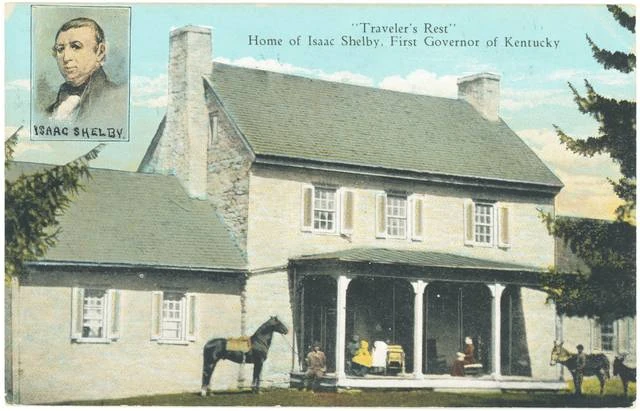
Personal Life
Shelby had served in Virginia’s House of Delegates in 1779 and was elected to North Carolina’s General Assembly in 1781 and again in 1782. Following the conclusion of the Revolutionary War, Shelby relocated to the “new west”, or Kentucky, in April 1783 on lands awarded to him for his military service. He settled in Boonesborough and married Susannah Hart, a union that produced eleven children.
Their eldest daughter, Sarah, married Dr. Ephraim McDowell, and the youngest daughter, Letitia, married future Kentucky secretary of state Col. Charles Stewart Todd. Todd served as the fifteenth United States Ambassador to Russia during the entirety of President Tyler’s administration. Shelby gifted his daughter and son-in-law in 1834 with the Todd House, which still stands in Shelby County. It was renovated in the mid-1980’s by Shelby County Historical Society members Sherry and Lawrence Jelsma.
On November 1, 1783, Isaac Shelby’s family moved to Lincoln County, settling at Traveler’s Rest. Shelby was named one of the first trustees of Transylvania Seminary (now Transylvania University) in 1783, and on December 1, 1787, founded the Kentucky Society for the Promotion of Useful Knowledge.
Shelby poured all of his energy into making Kentucky its own state, separate from Virginia. In 1792 he was awarded for his labors with the state’s highest honor by being sworn in as Kentucky’s first governor. The heroism he displayed during his military career made him popular with the citizens of the new state. The Kentucky electoral college unanimously elected him governor.
Throughout Shelby’s first term of office from 1792 to 1796, Kentucky was troubled by conflicts with Native Americans. In these formulative years, Shelby secured the state from the Native Americans and organized its first government. He used the Citizen Genêt affair to convince the Washington administration to conclude an agreement with the Spanish Empire for free trade on the Mississippi River.
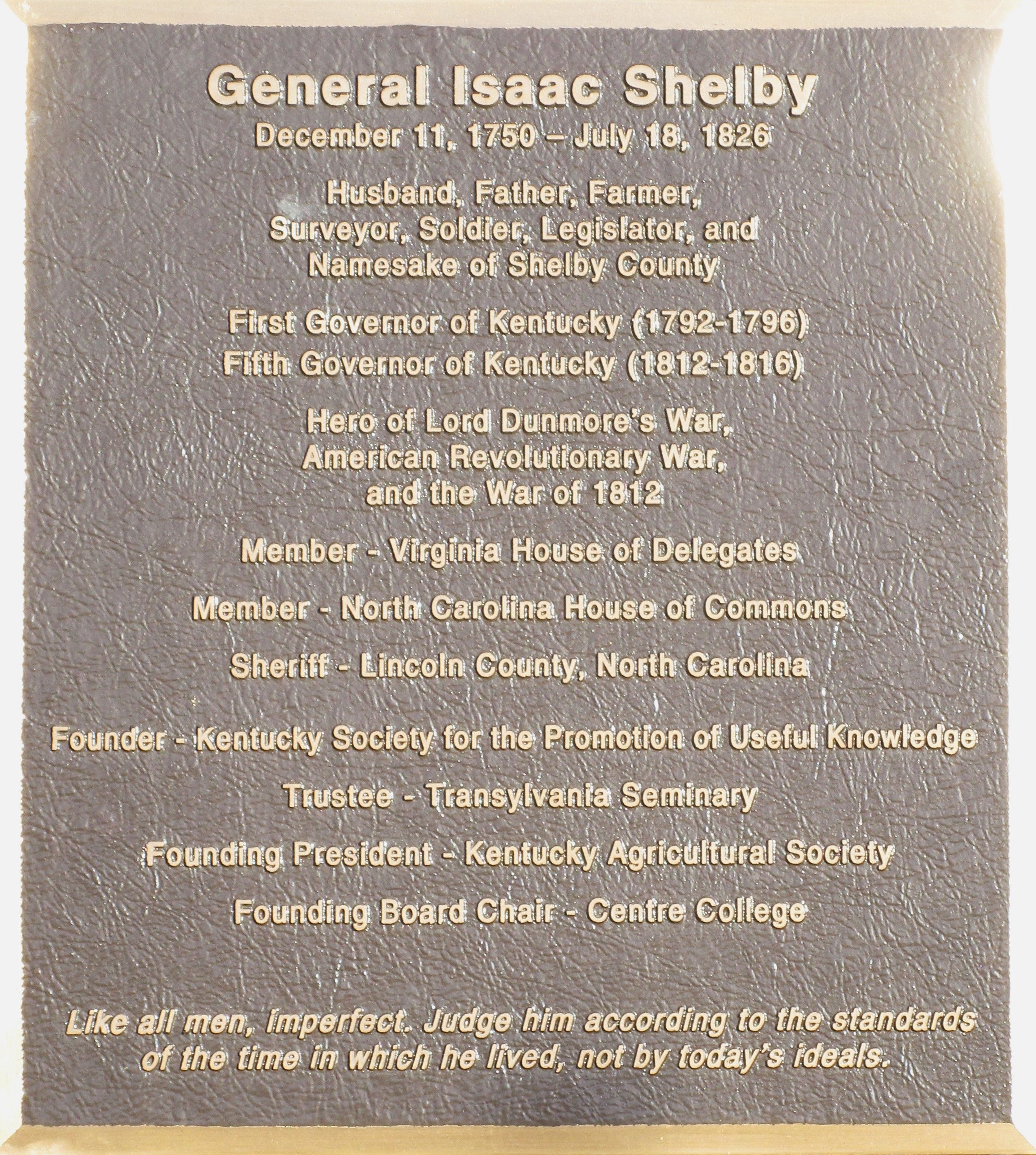
Later Life
In 1812, Shelby was elected for a second term as Kentucky governor and served until 1816. He had retired from public life, but was elected easily as many knew he was equal to the task at hand. At age 63, at the request of General William Henry Harrison, he commanded 4,000 Kentucky troops at the Battle of the Thames in 1813.
After the War of 1812, Shelby declined President James Monroe’s offer to become Secretary of War. In his last act of public service, along with Andrew Jackson, they acted as commissioners to negotiate the Jackson Purchase from the Chickasaw Indians. Isaac Shelby died at his estate in Lincoln County, KY on July 18, 1826.
Shelby County, KY was established on June 28, 1792, the same year Kentucky become a state, and was the third county to be formed after Kentucky’s statehood. Shelbyville became the county seat. There is a Shelby County in the following states: Kentucky, Tennessee, Texas, Alabama, Illinois, Alabama, Indiana, Iowa, Missouri, and Ohio.
